Heteromeringia
Owen Lonsdale and Steve MarshallIntroduction
Heteromeringia Czerny is a genus of 62 species that are worldwide in distribution, although the group is relatively species-poor in the Holarctic: four species are found in the Nearctic (two of which are Neotropical and only reach Florida) and only H. nigrimana Czerny is found in the Palaearctic outside of Japan (Lonsdale & Marshall, 2007). The genus reaches its greatest diversity in the Oriental Region, but numerous species are also found in the Australian, Afrotropical and Neotropical Regions.
New World Heteromeringia (primarily those collected in the Neotropics) have been found to aggregate around relatively open areas such as tree falls, forest borders, pastures and landslides (Lonsdale & Marshall, 2007). McAlpine (1960) also notes that while most Australian clusiids have been taken along creeks in rainforests, species of Heteromeringia have been collected in more open forests. In Europe, Heteromeringia nigrimana is associated with dead wood in deciduous or mixed forests, predominantly on fallen decaying tree trunks (Rohácek 1995).
Like other clusiids, oviposition following copulation likely occurs in decomposing wood, as Australian specimens of Heteromeringia norrisi McAlpine, 1960 have been bred from rotting wood, and one female was collected "in [a] log with termites" (McAlpine 1960).
Heteromeringia have been collected using dung baits and dung traps, mushroom traps and carrion (Lonsdale & Marshall, 2007). Specimens are also encountered regularly in Malaise traps.
As in other clusiodine genera, males of Heteromeringia are known to engage in agonistic behaviour at what will likely prove to be lek sites. In South Carolina, males of H. nitida have been observed defending territory from one another on a rotten oak log on several different occasions (Lonsdale & Marshall, 2007). The behaviour of the males of this species is particularly interesting, however, because in this species, when two males appear in the same territory to fight for its control, they fold their fore legs backwards to "box" with their elbows. "Scorpion-like" displays have also been observed in one Australian species (Lonsdale & Marshall, in manuscript) and many more unusual displays almost certainly await discovery.


Heteromeringia nitida males can fold their fore legs backwards to "box" with their elbows. © Steve Marshall
Characteristics
Heteromeringia is a genus of often darkly pigmented Clusiodinae 2.4-5.0 mm in length. It is often mistaken for Sobarocephala in the New World because it has independently acquired an inclinate anterior fronto-orbital bristle (Lonsdale & Marshall, 2006). It can be separated from Sobarocephala by having no dorsal preapical tibial bristles, one pair of small lateral scutellar bristles, an elongate double-ribbed phallus that is often strongly coiled and protruding from the abdomen, and fore tarsi that are sometimes elongate and laterally flattened. Heteromeringia also shares the following clusiodine synapomorphies: the antenna arises at or below the midpoint of the head; the outer extension on the pedicel is blunt and obtuse and the inner extension is absent; the scutellum is flat and longitudinally wrinkled dorsally, the hypandrial complex has undergone a large amount of reduction and fusion; the spermathecae are longitudinally segmented and are very often dark and telescoped.
The vast majority of Heteromeringia collected in the Neotropics will belong either to H. czernyi Kertesz or H. fumipennis Melander & Argo. As illustrated below, Heteromeringia czernyi differs from H. fumipennis by having an upcurved bristle in the posterodorsal corner of the anepisternum and an additional vibrissa, and H. fumipennis has a wing that is almost entirely darkly infuscated and the male has a small pilose disc on the anepisternum (Lonsdale & Marshall, 2007).

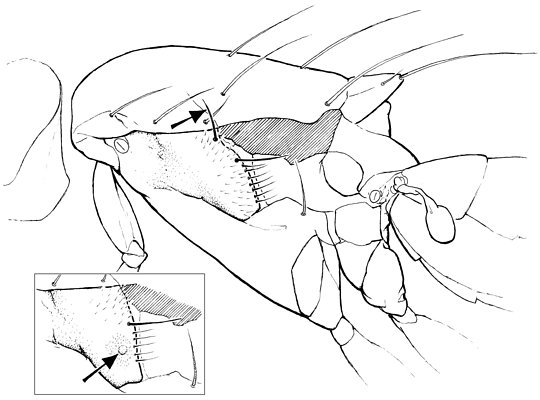
Male thorax lateral: Heteromeringia czernyi Kertesz and H. fumipennis Melander & Argo (inset). © Owen Lonsdale.

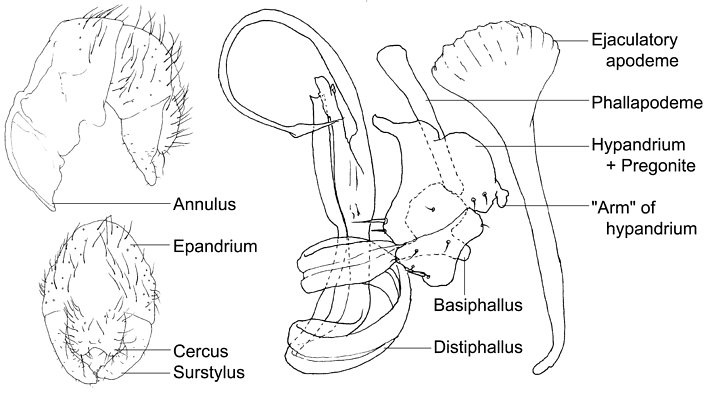
Heteromeringia nitida Johnson male genitalia; external, left lateral (top); external, posterior (bottom); internal (left lateral, not drawn to scale). © Owen Lonsdale.
Discussion of Phylogenetic Relationships

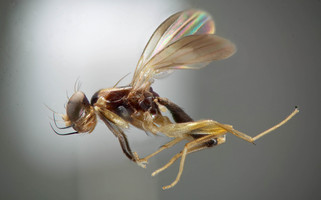
Tranomeringia zosteriformis Sasakawa. © Owen Lonsdale
Sasakawa (1966) revised the Oriental and Pacific Heteromeringia, where he described 23 new species and erected the genus Tranomeringia (species characterized by long, stout, strongly upcurved vibrissae; type species figured to right). He provided a key to all Oriental Heteromeringia, genitalic illustrations for all new species, and a phylogeny outlining ten species groups. Tranomeringia was recently synonymized by Lonsdale & Marshall (in press), who redefined the boundaries of Heteromeringia.
Lonsdale & Marshall (2007) last revised the New World Heteromeringia, describing numerous new species and two species groups: the H. czernyi group, which is endemic to the Neotropics and diagnosed by two pairs of vibrissae (in part), and the H. nitida group, which is worldwide in distribution and defined by a pilose disc on the male anepisternum. A world revision will be necessary to resolve the phylogeny of this diverse and cryptic genus.
References
Lonsdale, O. & Marshall, S.A. 2006. Redefinition of the Clusiinae and Clusiodinae, description of the new subfamily Sobarocephalinae, revision of the genus Chaetoclusia and a description of Procerosoma gen. n. (Diptera: Clusiidae). European Journal of Entomology, 103: 163-182.
Lonsdale, O. & Marshall, S.A. 2007. Revision of the New World Heteromeringia (Diptera: Clusiidae: Clusiodinae). Beiträge zur Entomologie 57(1): 37-80.
Lonsdale, O. & Marshall, S.A. In press. The Clusiidae (Diptera: Schizophora) of Fiji, with redefinition of Heteromeringia Czerny and synonymy of Tranomeringia Sasakawa. Occ. Pap. Bishop Mus.
McAlpine, D.K. 1960. A review of the Australian species of Clusiidae (Diptera: Acalyptrata). Rec. Aust. Mus. 25: 63-94.
Rohácek, J. 1995. Clusiidae (Diptera) of the Czech and Slovak Republics: Faunistics and notes on biology and behaviour. Cas. Slez. Muz. Opava (A) 44: 123-140.
Sasakawa, M. 1966. Studies on the Oriental and Pacific Clusiidae (Diptera) pt. 1. Genus Heteromeringia Czerny, with one new related genus. Pacific Insects 8(1): 61-100.
Title Illustrations

| Scientific Name | Heteromeringia fumipennis Melander & Argo |
|---|---|
| Specimen Condition | Live Specimen |
| Sex | Female |
| Life Cycle Stage | Adult |
| Copyright |
© Steve Marshall

|
| Scientific Name | Heteromeringia veitchi Bezzi |
|---|---|
| Specimen Condition | Dead Specimen |
| Sex | Male |
| Life Cycle Stage | Adult |
| Image Use |
 This media file is licensed under the Creative Commons Attribution-NonCommercial License - Version 3.0. This media file is licensed under the Creative Commons Attribution-NonCommercial License - Version 3.0.
|
| Copyright |
© Owen Lonsdale

|
About This Page
Owen Lonsdale

Canadian National Collection of Insects, Arachnids & Nematodes
Steve Marshall

University of Guelph, Canada
Correspondence regarding this page should be directed to Owen Lonsdale at and Steve Marshall at
Page copyright © 2011 Owen Lonsdale and Steve Marshall
 Page: Tree of Life
Heteromeringia .
Authored by
Owen Lonsdale and Steve Marshall.
The TEXT of this page is licensed under the
Creative Commons Attribution-NonCommercial License - Version 3.0. Note that images and other media
featured on this page are each governed by their own license, and they may or may not be available
for reuse. Click on an image or a media link to access the media data window, which provides the
relevant licensing information. For the general terms and conditions of ToL material reuse and
redistribution, please see the Tree of Life Copyright
Policies.
Page: Tree of Life
Heteromeringia .
Authored by
Owen Lonsdale and Steve Marshall.
The TEXT of this page is licensed under the
Creative Commons Attribution-NonCommercial License - Version 3.0. Note that images and other media
featured on this page are each governed by their own license, and they may or may not be available
for reuse. Click on an image or a media link to access the media data window, which provides the
relevant licensing information. For the general terms and conditions of ToL material reuse and
redistribution, please see the Tree of Life Copyright
Policies.
- First online 25 August 2005
- Content changed 03 June 2008
Citing this page:
Lonsdale, Owen and Steve Marshall. 2008. Heteromeringia . Version 03 June 2008 (under construction). http://tolweb.org/Heteromeringia/27682/2008.06.03 in The Tree of Life Web Project, http://tolweb.org/




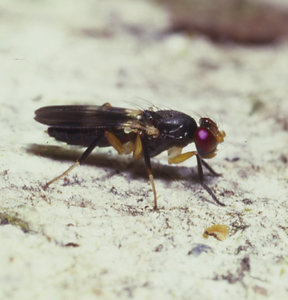
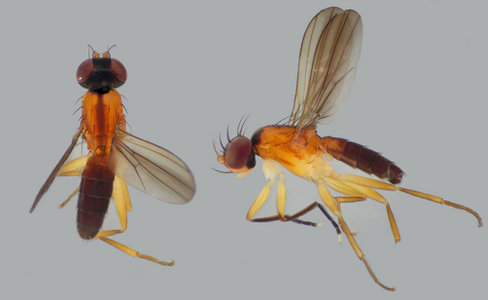




 Go to quick links
Go to quick search
Go to navigation for this section of the ToL site
Go to detailed links for the ToL site
Go to quick links
Go to quick search
Go to navigation for this section of the ToL site
Go to detailed links for the ToL site